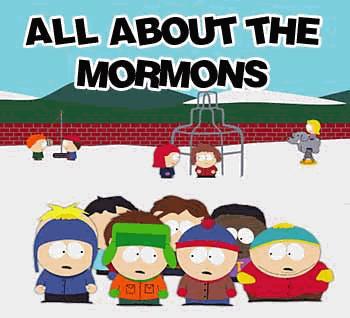While teaching this past week, a curious thing happened: without having given it much thought, I found myself using Mormonism to illustrate all kinds of evolutionary theories regarding religion. Call it putting Mormon flesh on theoretical bones. For instance, we were examining this passage from Richard Sosis’ and Candace Alcorta’s article on costly signaling and religious behavior:
Religious behaviors often entail significant proximate costs, such as time, energetic, and material costs, as well as physical and psychological pain, that appear to be greater than any derived benefits. Consequently, religious behavior poses a genuine challenge for those who employ optimization, rational choice, or other egoistic based models to explain human behavioral variation. Researchers have sought to unravel this dilemma by positing somatic, reproductive, and psychological benefits conferred by religious behaviors on their practitioners that could outweigh these costs. Realized benefits include improved health, survivorship, economic opportunities, sense of community, psychological well-being, assistance during crises, mating opportunities, and fertility (see Reynolds and Tanner for a review).
The Reynolds and Tanner reference is to their book, The Social Ecology of Religion, in which they examine the various ways in which religions shape the human life cycle. As they put it:
“Religions, the world over, are concerned with human physical existence, human bodies, what they may and may not do, when they may and may not do it, how they should be conceived, born, fed, cleaned, dressed, and buried. [W]e take as our baseline the life cycle of ordinary people; we see this as consisting of a number of transitions, the points marked by van Gennep’s “rites of passage”; and we look at the ways they are managed by religions in all parts of the world.”
Reynolds and Tanner are interested mostly in how religions function and structure lives on a daily and generational basis. Drawing their examples mostly from Judaism, Christianity, Islam, Hinduism, and Buddhism, they assess how these “world” religions address pan-human issues: conception and contraception, infanticide and abortion, birth and childhood, adolescence, marriage and divorce, middle and old age, and death.
Any post-Neolithic or modern religion that doesn’t have something to say about these issues is probably extinct, or at least not very successful. Those religions that intuitively understand the importance of these issues, and explicitly address them, stand a much greater chance of surviving and being successful.
While Reynolds and Tanner occasionally mention Mormons, the references are brief and usually in the context of pointing out that non-smoking and non-drinking Mormons enjoy better health than most Americans. They also note that the Mormon emphasis on fertility results in higher birth rates. While not trivial, this barely scratches the surface of the myriad ways in which Mormonism inserts itself into rites of passage and life cycles. In doing so, it confers on its members — all of whom are required to engage in costly signaling — the benefits mentioned by Sosis and Alcorta: improved health, survivorship, economic opportunities, sense of community, psychological
well-being, assistance during crises, mating opportunities, and fertility.
So why was I drawing on Mormonism to illustrate these issues? I suspect it has something to do with a series of recent articles, each of which addresses some aspect of Mormonism that was new to me:
- “Confessions of an Ex-Mormon: A Personal History of America’s Most Misunderstood Religion” (The New Republic) by Walter Kirn
- “How the Mormons Make Money” (Bloomberg Businessweek) by Caroline Winter
- “A Spirit of Persecution: What the Hill Cumorah Pageant Tells Us About Mormonism’s Past and Its Present” (Slate) by Max Perry Mueller
After reading these articles, it’s not hard to understand the success of Mormonism or why it might appeal to some.


